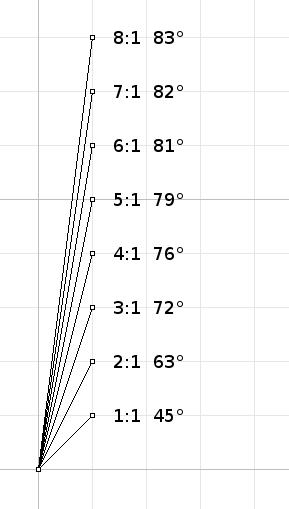I just learn that the elevation angle would be given by the lift-to-drag (L/D) ratio as Tan(elevation angle). For example the L/D or glide ratio is (roughly) 4. Tan(elevation angle) is 4(76 degrees). On a trigonometric table we go to tangent for 76 degrees and we see the value of 4.
http://2e5.com/kite/ld/ provides some indications and the graph below:
I don’t know if this is correct but that proves my knowledge of physics and math is so limited that I have to do some research each time I run into a problem in AWE.

